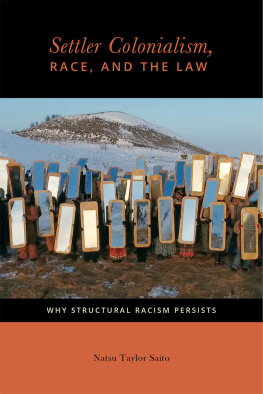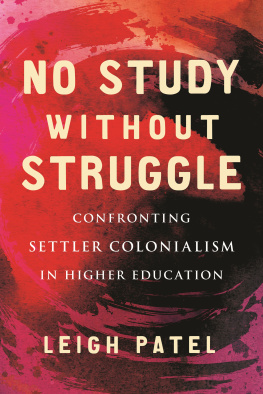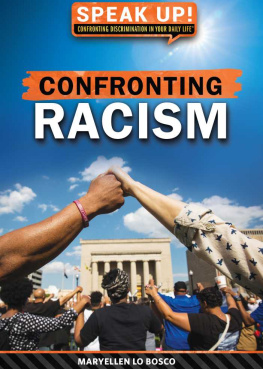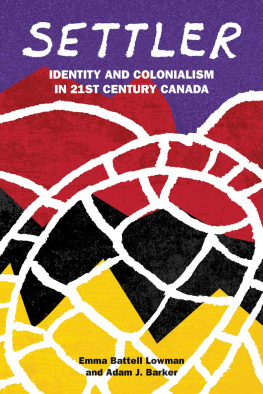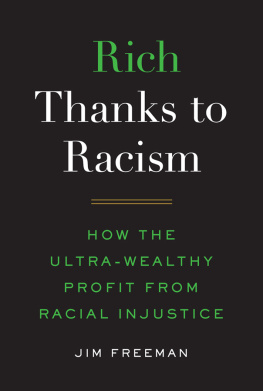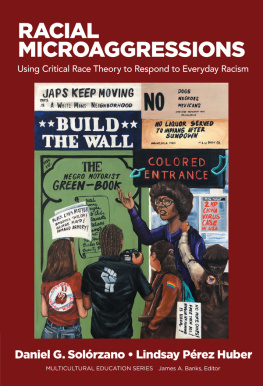Settler Colonialism, Race, and the Law
CITIZENSHIP AND MIGRATION IN THE AMERICAS
General Editor: Ediberto Roman
Tierra y Libertad: Land, Liberty, and Latino Housing
Steven W. Bender
No Undocumented Child Left Behind: Plyler v. Doe and the Education of Undocumented Schoolchildren
Michael A. Olivas
Marginal Workers: How Legal Fault Lines Divide Workers and Leave Them without Protection
Ruben J. Garcia
Run for the Border: Vice and Virtue in U.S.-Mexico Border Crossings
Steven W. Bender
Those Damned Immigrants: Americas Hysteria over Undocumented Immigration
Ediberto Roman
Strange Neighbors: The Role of States in Immigration Policy
Carissa Hessick and Gabriel G. Chin
Revoking Citizenship: Expatriation in America from the Colonial Era to the War on Terror
Ben Herzog
Beyond Deportation: The Role of Prosecutorial Discretion in Immigration Cases
Shoba Sivaprasad Wadhia
The New Deportations Delirium: Interdisciplinary Responses
Daniel Kanstroom and M. Brinton Lykes
At Home in Two Countries: The Past and Future of Dual Citizenship
Peter J. Spiro
Settler Colonialism, Race, and the Law: Why Structural Racism Persists
Natsu Taylor Saito
Settler Colonialism, Race, and the Law
Why Structural Racism Persists
Natsu Taylor Saito

NEW YORK UNIVERSITY PRESS
New York
NEW YORK UNIVERSITY PRESS
New York
www.nyupress.org
2020 by New York University
All rights reserved
References to Internet websites (URLs) were accurate at the time of writing. Neither the author nor New York University Press is responsible for URLs that may have expired or changed since the manuscript was prepared.
Library of Congress Cataloging-in-Publication Data
Names: Saito, Natsu Taylor, author.
Title: Settler colonialism, race, and the law : why structural racism persists / Natsu Taylor Saito.
Description: New York : New York University Press, [2020] | Includes bibliographical references and index.
Identifiers: LCCN 2019008926| ISBN 9780814723944 (cl.; acid-free paper) | ISBN 0814723942 (cl.; acid-free paper)
Subjects: LCSH : Race discriminationLaw and legislationUnited StatesHistory. | MinoritiesLegal status, laws, etc.United StatesHistory. | RacismUnited StatesHistory. | United StatesRace relationsHistory. | United StatesColonizationHistory. | Indigenous peoplesLegal status, laws, etc.United StatesHistory. | DecolonizationUnited StatesHistory. | United StatesTerritorial expansion.
Classification: LCC KF4755 .S25 2020 | DDC 305.800973dc23
LC record available at https://lccn.loc.gov/2019008926
New York University Press books are printed on acid-free paper, and their binding materials are chosen for strength and durability. We strive to use environmentally responsible suppliers and materials to the greatest extent possible in publishing our books.
Manufactured in the United States of America
10 9 8 7 6 5 4 3 2 1
Also available as an ebook
For Ward
Contents
How do we rectify a system that so brilliantly serves its intended purpose?
Dorothy E. Roberts
Racialization has always been essential to the establishment and maintenance of structures of power and privilege in the United States. Racial realism, as the late Derrick A. Bell Jr. termed it, forces us to acknowledge that communities of color in the United States remain economically, politically, and socially subordinated, long after the formal abolition of American apartheid. An honest assessment of these realities makes it clear that neither the Constitutions guarantee of equal protection nor the nation of immigrants mantra can effectively dislodge structural racism. Yet we continue to return to the courts, the legislatures, and our political leaders in these terms, seeming, collectively, at a loss for meaningful alternatives.
The 2008 election of Barack Obama, the countrys first Black president, generated a wide range of public reaction. And for those clinging to the perceived benefits of White supremacy, it signaled the crumbling of their world. The visuals shifted during the Obama era, but ultimately very little changed with respect to racial disparities in the distribution of power and wealth.
Since the beginning of 2017, President Donald Trumps administration has illustrated how quickly and easily the perceived gains of subordinated groups can be reversed by executive action. Within just a few weeks of taking office The vision of America as a White supremacist, patriarchal, settler society is alive and well today. Ignoring this reality is no longer an option.
We all have visions of better worlds, ones wed like for ourselves, or to bequeath to our children and their children. To build these futures, we need to understand whats wrong with where we are, and how it got to be wrong. Tracing the problem to its source allows us to conceive structural, rather than superficial, solutions. Michel Foucault articulated this in terms of historical genealogy,
This process requires conceptual frameworks unconstrained by the consensus reality reflected in the master narrative of American history, for we know it to be a narrative that does not accurately reflect the realities of life for most peoples of color or, indeed, most White people in this country. That genealogy, and what it can tell us about deconstructing racial privilege and subjugation, is the focus of this book.
The relationship between Indigenous rights and the subordination of other people of color is only occasionally confronted. It is the elephant in the room (or, perhaps, still waiting in the hall), a subject few non-Indigenous people are willing to address except in the past tense. Yet if racialized power and privilege in the United States today are rooted in the historic and ongoing colonization of Native North America, dismantling the colonial relationships that still undergird the state is in the interest of not only Indigenous nations and peoples but all subordinated peoples of color and, quite possibly, a large majority of those who identify as White Americans.
In exploring the genealogy of race and racism in the United States from this perspective, the conceptual framework of settler colonial theory provides a good starting point. Briefly put, it assesses the impact of colonizers who did not just intend to exploit the land, labor, and resources of other peoples and then go home, but who came to stay. Over the past several centuries, a largely Angloamerican settler class has exercised a presumed prerogative to appropriate Indigenous lands and resources; to establish a state over which it wields total control; and to decide who could, could not, and had to live within its claimed territorial boundaries. There is, however, much to be learned by viewing the relationship of voluntary and involuntary migrants of color to both Indigenous peoples and Euroamerican settlers in terms of the ongoing colonization of this continent.
Most contemporary writing on race in America presumes that implementing the Constitutions guarantee of equal protection is the bestor perhaps onlyway of remediating racialized domination and subordination. However, an equal protection framework presumes that we start from a level playing field, and addresses the persistence of racial disparities in terms of explicit or implicit personal bias and/or the lingering effects of historic dispossession or exploitation. This means that potential remedies are, for the most part, limited to some variant of sensitivity training, laws and regulations prohibiting intentional discrimination, and compensation for a narrow range of past wrongs. Collectively, we have followed this path for well over a half century only to see that any gains we make can readily be stripped away by those determined to maintain the political, economic, and racial status quo. By framing our struggles in terms of the states responsibility to implement its promises of procedural fairness and nondiscrimination, we have already foreclosed the possibility of fundamental structural change arising from grassroots movements for self-determination.

